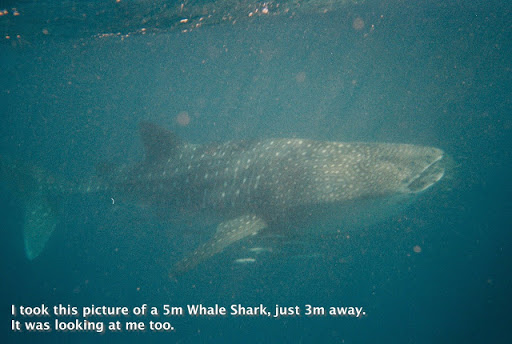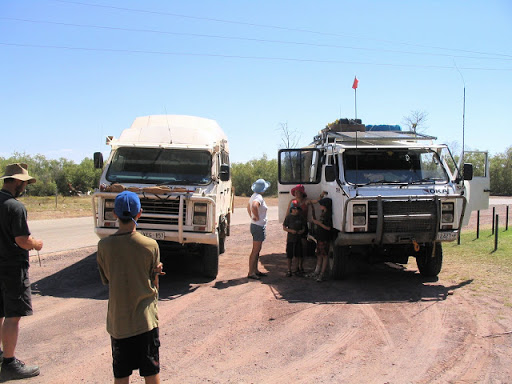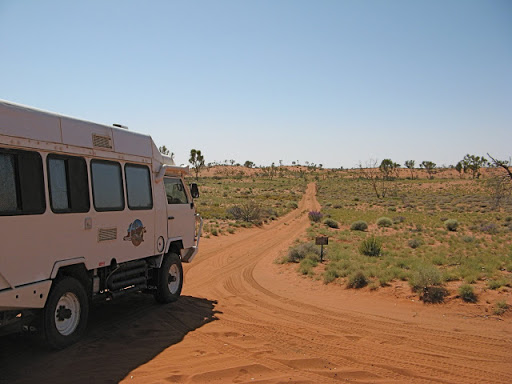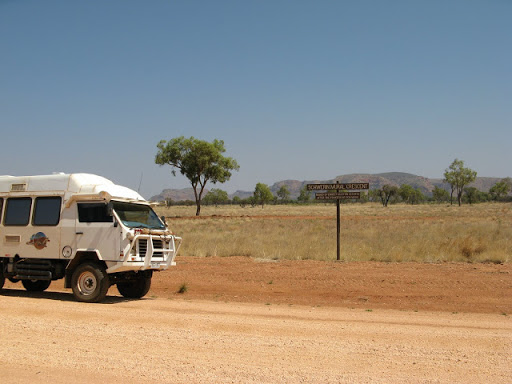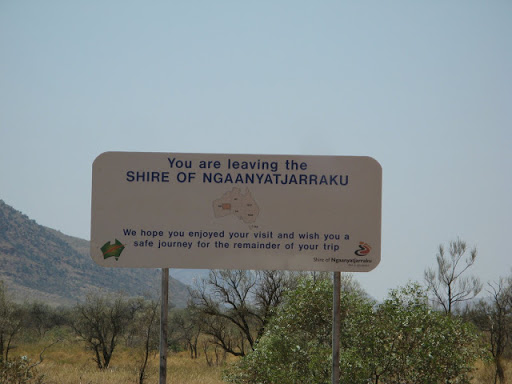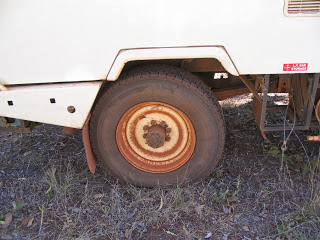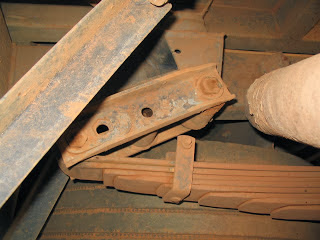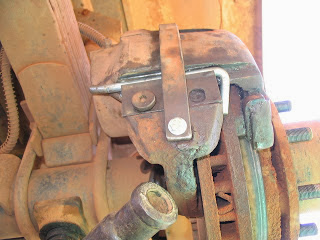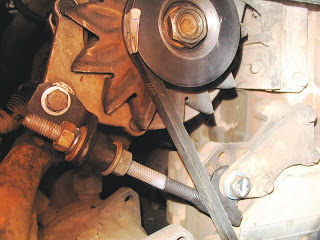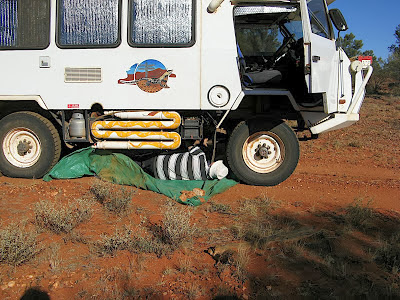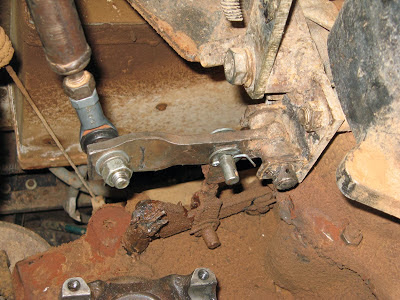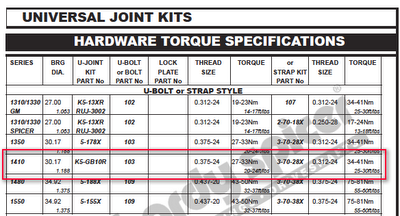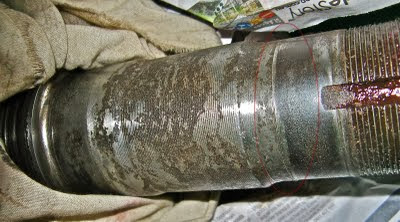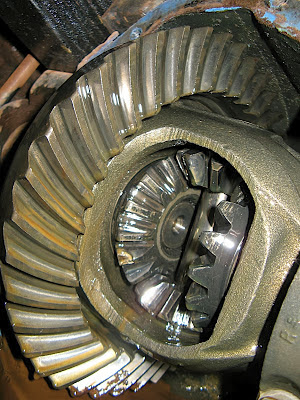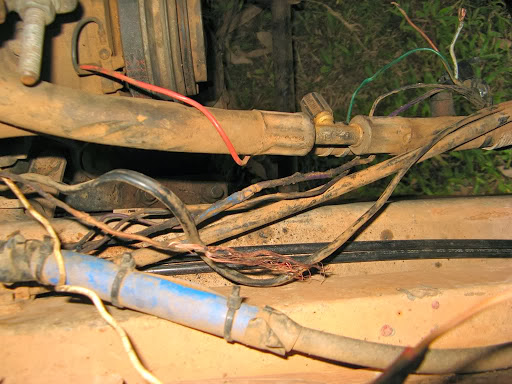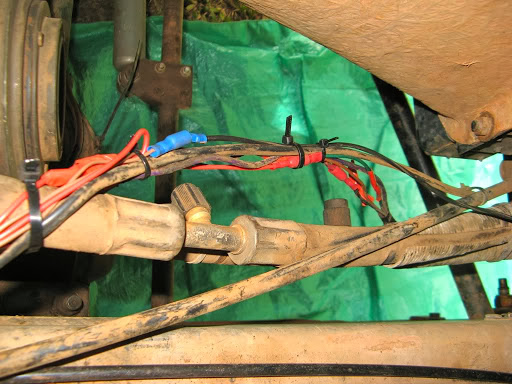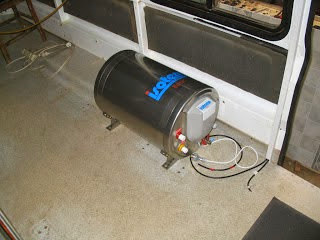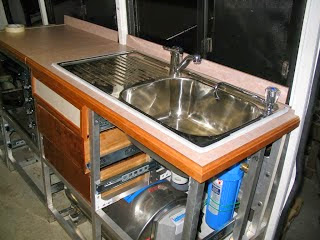Welcome to David and Janet Ribbans blog


You can also visit the official Oka 4WD website here.
Pandora Web Archive
We're now honoured to have our blogs archivedon the National Library of Australia's Pandora Web Archive.
Bookmark this link to the archived version in case anything ever goes wrong with Google, or I accidentally hit "Delete All" in a fit of pique. The drop down menus above might not work in the archived version but everything else should...
Wednesday 26 March 2008
Bosch VE Injector Pump Resources
Friday 21 March 2008
Our trek around Northern and Western Australia, May to Oct 2007
We returned safe and (mostly) sound from our 5 month trek around Northern and Western Australia. (Click on photos for a larger view, or go to http://picasaweb.google.com/dandjribbans to see all our photos).
We had a great trip, although it was exhausting and not without incident. 20,000 kms mostly on outback gravel and sandy tracks. No punctures but a broken rear spring bolt on the Mitchell Falls road, followed 3 months later by the same spring itself snapping like a biscuit (both main leaves). Different faults but the same end result, the rear axle slamming backwards on one side into the chassis and sending us crabwise. No dramas on lonely outback tracks though, but they did leave us on the side of the road for a day while we fixed them.
We also had some very scary moments when we realised we were all alone in the universe for days at a time, with only our HF radio for company. We have been to some of the remotest places and tracks in the country from which there is no hope of recovery in case of terminal breakdown, and even the Flying Doctor might be many hours or days away.
But overall the Oka performed remarkably well, it was economical, reliable (except for the few problems recorded herein, some of which were not entirely unexpected), fairly comfortable considering the track conditions, and none of the motorhome domestic systems that I had built seriously failed. There are always improvements that one can make of course based on experience, and many of these will be implemented over the summer, between treks.
This is our GPS track loaded into Google Earth.
We started gently enough with a leisurely drive up the Oodnadata track to Alice Springs where I had to fix a slow leak on one of our reserve fuel tanks.
From Alice we headed 1200 kms west across the Gary Junction Road (one of Len Beadell's outback tracks ) between the Great Sandy and Gibson deserts and through Aboriginal lands to intersect the Canning Stock Route (CSR) at Well 33 (the Kunawarritji Community, diesel at $2.80/l). Highlights of this section were the very pretty desert scenery and the stands of Desert Oak trees around Jupiter Well.
Me pumping water at Jupiter Well.
We then had a fabulous 300 kms trip down the centre section of the CSR crossing 200 sanddunes to Georgia Bore (near Well 22) and then headed 200 kms west again into the Rudall River National Park, the 2nd largest and remotest NP in the country (and the loneliest, we were the only people there).
From there we headed a further 300 kms to Newman for much needed supplies and retail therapy, and a taste of bitumen for a while.
An easy but long drive then took us west to Exmouth and Ningaloo Reef where we had a Whale Shark Tour and I swam with 3 huge (6 m) whale sharks. I thought I would be scared ****less but I found they were so gentle and placid that it was not scary at all. I have photos I took underwater and a DVD taken by one of the crew to prove it. Even saw 2 humpback whales pass in front of me while snorkelling. Janet stayed on the boat and took photos.
I actually took this picture, a 6 m whale shark only 3 m away from me, and looking at me!
We spent nearly 2 weeks around Ningaloo Reef. It's so scenic it's difficult to leave but eventually we dragged ourselves through Marble Bar where we visited a WW11 secret airbase (never found by the Japanese, but we found it), which still has a fascinating array of runways and wartime supply dumps to fossick through.
We did Broome again, mostly for supplies, then up to Cape Leveque, Derby and on to the Gibb River Road. We've done this track twice before but it still has plenty of superb gorges to walk and swim in. Half way along the track we turned north to the Mitchell Plateau where we hadn't been before, and this is where the real fun started.
Janet at the Manning George Falls.
The magnificent Mitchell Falls.
Janet at the Mitchell Falls.
The track to Drysdale River Station is good and they have a really good camping area. From Drysdale it's a 400 kms round trip to the Mitchell Falls which are truly magnificent. Along the way there is an excellent camp on the rocky banks of the King Edward River with plenty of Aboriginal art including Bradshaw paintings. Getting there however is another story.
The Mitchell Falls road is wide but horribly corrugated and immediately leapt to No. 1 position on our "Worst Roads In The Country" list. 10-15 km/h is the best you can achieve without breaking something vital over the shattering corrugations, even with almost flat tyres. In fact we broke several things, including the rear wheel carrier mounting bracket which was fixed by (and still is held on with) rope. About 20kms out from Drysdale on the return leg, nearly out of gas, water, fuel and food (wouldn't you know it?), the main shackle bolt on the rear spring broke, leaving us stranded on the side of the road for 25 hours (Janet timed us) while we fixed it. It was hot and very heavy work jacking up the Oka and levering the axle back into position so we could replace the bolt. But we did it!
It's not supposed to be like this! This is also the spring which broke 3 months later.
While we were doing that, I noticed that the brake caliper had lost it's retaining spring and was imminently about to fall off. Being fully self sufficient and resourceful, I selected the correct size of tent peg (10mm) and tapped it into the caliper in place of the spring and bent the end over where it worked fine and is still there 5,000 kms later. (Or it would be if I hadn't had to remove it to replace a leaking oil seal in Katherine. Luckily I had 2 tent pegs).
We had a nice dinner out at the Drysdale Station restaurant to celebrate our achievement and our 35th wedding anniversary. We ordered steak but sadly they told us they had run out of steak (and this on one of the largest cattle stations in the country??)
Anyway nothing could dull our sense of achievement at having done a major repair on the side of the one of the remotest tracks in the country. As luck would have it, this experience was to come in handy 3 months later when the spring itself broke on the Mereenie Loop Road north of Kings Canyon.
However to regress, we completed the Gibb River Road to Wyndham, then to Kununnurra and back to the bitumen for the drive across the Victoria Highway through Katherine, Litchfield NP to Darwin.
We met Greg and Marie Boyle and their family and Oka in Wyndham
We spent a couple of weeks in and around Darwin which is a delightful place but ultimately it got too hot and humid for us and we retreated south supposedly to escape from it all. We were wrong, we escaped the humidity but not the heat.
Returning south we had the choice of 3000 kms of easy but boring bitumen to Adelaide or do some more outback travelling. So naturally we chose the latter.
We returned to Katherine the back way via Litchfield NP again and spent a few days there doing a full maintenance job on the Oka. Where we were going we would certainly need it.
From Katherine we headed down the Buntine Highway to Halls Creek where it was 38º, but they had a swimming pool. We had to stay for the weekend, waiting for the Telecentre to open to pay some bills, then headed down the Tanami Track to Wolfe Creek meteorite crater. This was our 3rd visit but it's always interesting. Just south of there we turned down the northern end of the Canning Stock Route at Billiluna and started a 700 km trek across the Great Sandy Desert back to where we first met the CSR at Well 33.
The 700 kms took 7 days and we crossed 620 big sand dunes averaging 15km/h and getting stuck on several (we have the videos). We met only 5 other vehicles in 7 days but it was the most exhilarating drive imaginable, if (and it's a big IF) you are fully prepared and totally self-sufficient. It was also very hot every day (38-40º) and we drank 5-6 litres of water a day each, even with the A/C on full.
Here's some videos of our trip on the CSR:
There are 51 wells on the CSR but only a handful have useable water in them (which you have to winch out manually, 19th century style). Most of the others are in ruins since they haven't been used for their original purpose for 50 years. We came across a burnt out a modern Ford Explorer 4WD (which is marked on the maps near Well 49), a poignant reminder of the risks associated with being in this area. Apparently they pulled over onto some spinifex with a hot engine which ignited the spinifex and that was that.
Their fridge and jerry cans are still there, all exploded in the heat.
It was at that point that we realised that there was only one way our Oka was going to get off this track and that was under its own steam. No vehicle recovery is possible from here. (Note: always take tent pegs and fencing wire, they are very useful).
In a mess of sand dunes and tracks a moving map is essential. The blue range rings around our position are 1 km apart, and so are the sand dunes.
Our other vital piece of equipment is a GPS and moving map computer display. Without these we would have been seriously worried many times about our exact location and direction. Signs in the outback are either non-existent or very basic and tracks can be very confusing. We relied on it many times when tracks disappeared or more often there were multiple options.
Typical outback sign, if you can spot it.
At Well 41 we had a lay-day because it was Grand Final Day. There are no radio stations in the Great Sandy Desert so I rigged up a long wire aerial over a tree (first I had to find a tree, not common in deserts) and just managed to drag in a faint ABC signal through the noise. So we sat in the shade and listened in. Technologically successful but unfortunately not the right outcome. By half time I had lost heart and spent the rest of the match fixing the fridge door which couldn't stand the vibration and had fallen off with a broken hinge. Superglue to the rescue, braced by an aluminium bracket.
Well we made it back to Well 33 OK and refilled with 160 L of fuel (at $2.80/L for diesel, unleaded petrol was $3.20/L). The sanddunes had nearly doubled our fuel consumption (down from 7 to 4 km/l), one of the other significant risks of being out there. We've never spent over $400 on fuel in one go before, but luckily they have Eftpos facilities at the Kunawarritji store. We were delighted to pay $2.80 a litre for diesel since fuel is rare out here and more important than water. With fuel you can go and find water. The opposite isn't true.
For the record, we carried 280 L of fuel, enough for 1200-1800 kms range depending on terrain, although we never got below 80 L in hand, enough for at least 400 kms in an emergency, 200 L of water (about 5-6 days worth with a daily frugal shower) and gas and food for at least 2 weeks.
We crossed our previous track from Alice Springs at Well 33 (good water from the tank and windmill there) and headed down the Gary Highway (another one of Len Beadell's outback tracks). This is a dead straight but very corrugated 400 km track across the Gibson Desert. It ends at Everard Junction on the Gunbarrel Highway where we turned east and headed another 400 km to Warburton Community.
Just 16 km off the top end of the Gary Highway is Veevers Meteorite Crater. It's 80 m across and 15 m deep but we'd never heard of it until I researched our proposed route. The visitors book there still contains the original hand written notes by the fellow who identified it in 1975. Only a handful of people have ever been there.
At McPhersons Pillar, along a 30 km track east from the Gary Highway, we were at our remotest and loneliest point ever. The nearest help would have been at Warburton, 300 kms to the SE as the emu flies. In the 5 days and nearly 800 kms between Kunawarritji and the Grand Central Road junction we had seen not one single vehicle or person. Not a good place for an emergency. There were plenty of camels, dingoes and spinifex hopping mice though.
The Gunbarrel Highway is badly washed away and quite dangerous in places. In fact the eastern section has been closed totally. The route now takes you down the Heather Highway (known as the Horrible Highway for corrugated reasons) to the Great Central Road (sounds grand but is just a wide corrugated gravel track).
The Gunbarrel passes a pleasant range of hills called the "Schwerin Mural Crescent", named by Ernest Giles after the Princess of Schwerin.
No, we had never heard of it either, or the Princess of Schwerin. (Wikipedia says: Schwerin is a city in northern Germany and the capital of the state Mecklenburg-Vorpommern). So now we all know.
From Warburton we headed along the Great Central Road to Giles Met Station, established by Len Beadell in 1955 to provide meteorology info for weapons testing at Woomera. We wanted to do a tour of the station but they had "computer problems" so it was cancelled. We did see the launching of the daily weather balloon though, which they still use for acquiring upper atmosphere data used by commercial aircraft.
We thought we were nearly home but no. From Giles it's a further 300 kms via Docker River to Uluru and civilisation at Yulara, and our first bitumen since Halls Creek 2000 kms to the north.The last part of the track to Yulara was very unpleasant, 40º and blowing a hot gale from the west. Our own dust was overtaking us and the engine was overheating since there was no air blowing though the radiator. At Yulara there was a sand storm and even worse, the swimming pool was closed for maintenance. Luckily they had made arrangements for campers to use the pool at one of the resort hotels for free.
So with renewed enthusiasm we left Yulara (still 450 kms from Alice Springs mind you) and headed to Kings Canyon. It was stinking hot again so we only did the short canyon walk since we had done the superb rim walk twice before anyway.
From there we headed around the gravel Mereenie Loop Road to Alice Springs. This road had worsened considerably since our previous trip and within 30 kms the rear spring broke both its main leaves. Snapped just like a biscuit. Presumably the previous 2000 kms of corrugations had weakened it and a few kms of smooth bitumen had finished it off. Now I knew where the creaking noises had come from.
Not much holding up the Oka, just the edge of the broken spring.
Anyway by now we were fully experienced in fixing such things and we had the axle strapped to the chassis in a couple of hours and were on our way again, but ever so slowly, as we crawled 260 kms into Alice Springs (fortunate name). It took us 3 days and we used our HF radio to call for some assistance. The radio base operator made some phone calls for us and by the time we arrived in Alice, a spring repair company was expecting us and fortuitously had managed to find a second hand spring for an Oka. They fitted it on a Saturday morning and we were on our way within 24 hours. The value of our HF radio has proved itself. We have heard dozens of other emergency calls before but this was the first time we had made one ourselves, although we were never in any real risk of getting stranded. If it had happened a few weeks earlier the outcome would have been different but we would still have fixed it and got mobile again.
The journey back to Adelaide was uneventful but just to push our luck a bit further, we diverted across the Painted Desert to Oodnadatta and then down the Oodnadatta Track to the Flinders Ranges and back home. We arrived 15 minutes late, but after 5 months way we didn't think that was too bad?
This is just a snapshot of our adventures, plenty more things happened that we still have to tell. We had a GREAT trip and after a rest we'd love to do it all again.
The Final Analysis
20,000 kms, 5000 photos, 3000 L of fuel, 120 different campsites, 8 major outback tracks, 4 other Oka's seen, 3 deserts crossed, 2 birthdays, one spring broken, no punctures, cheaper than living at home. Not a bad equation.
Wednesday 19 March 2008
Problems encountered with our Oka during Outback Treks
This is a list of some of the more notorious Oka problems we have encountered on our outback treks.
(Click on photos for a larger view)
1) The clutch cable snapped in the depths of the Carnarvon National Park, Salvator Rosa section. We had to do a U-turn on a narrow track and negotiate 30kms back to camp with no clutch, using only the starter motor to get moving and careful throttle control to change gears.
The cable had broken where it was swaged into the end of a bolt which is attached to the clevis pin block at the front.
The first photo shows where the cable broke, but this simple fix didn't work as the wire pulled out of the clamp too easily.
In the second photo, I have bent the cable over double before clamping it (although you can't see this).
I had to release the other end of the cable at the clutch lever to maintain some free play. This fix lasted several hundred kms until I could acquire and fit a new cable,
2) Spring bolt on the front (fixed) end of the rear spring broke on the Mitchell Falls Road. It took us 24 hours to fix and was hard, hot, heavy work. Several people went past but only one actually stopped to help. Thanks Doug.
We raised the rear of the Oka using a Hi-Lift jack until the spring came free, and then levered the axle back into place. We tried several methods of levering the axle forward but it proved very stubborn, due to its weight and the weight of the Oka on the opposite wheel, pinning it to the ground. So I used a screw jack jammed against the rear chassis cross member to push the rear spring shackle forward. That worked fine, although a lot of force was still needed.
To lever the front end of the spring down and forward to enable a new bolt to be fitted was also tricky. I put some blocks above the spring eye inside the chassis spring mount to maintain the correct hole height, put an axle stand under the axle and lowered the Hi-Lift jack. This compressed the spring and moved the hole forward until it lined up with the chassis hole. It took a combination of adjusting the screw jack pushing the spring, and lowering the Hi-Lift jack compressing the spring to achieve alignment of the holes.
But we did it, and celebrated with dinner out at Drysdale Station. We ordered steak but were told they had run out of steak, and this on one of the largest cattle stations in the region!
3) Spring broke both main leaves on the Mareenie Loop Road 300kms west of Alice Springs.
I had heard some strange creaking noises for an hour or so after leaving Kings Canyon and I stopped to investigate several times but could see nothing wrong. But soon after we hit the corrugations on the Mareenie Loop road, the spring broke both main leaves.
By shear coincidence (I hope), this was the same spring on which the bolt had broken 3 months earlier, but the end result was the same. In the photo above you can see that the Oka was being held up by only a corner of the broken spring. You can also see various brackets and wire I put on to ensure that if the bolt broke again, it couldn't fall out. Well, it didn't fall out, the spring broke instead.
Lots of people stopped to help this time but they were mostly overseas tourists with plenty of enthusiasm but no spares or tools to fix a broken spring.
In this fix, after realigning the axle using the screw jack pushing method, I used a winch extension strap (not a stretchy snatch strap) to locate and hold the axle in position for a 3 day crawl into Alice Springs.
I fixed the loop end of the strap in place using a spare spring bolt in the unused hole in the chassis spring mount. I then wrapped the strap around the axle and over the spare spring bolt a couple of times (avoiding the brake pipe) and then around itself in a Spanish capstan way to hold it tight.
I had to retighten the strap a couple of times on the way to Alice Springs, as it bedded in and the axle migrated backwards slightly, but the principle worked fine. I called in on the HF radio for assistance in finding somewhere that could fix the spring and fortunately, by the time we arrived, Don Kyatt Spare Parts (formerly Fiddler and Clarke) had located a second hand spring and we had it fitted (as a bit of luxury) one Saturday morning.
For a longer trip with a broken spring, I would have put a flat piece of steel or wood above the broken end of the spring to reduced wear and damage to the chassis. Alternatively, a better but more complex fix would be to remove the spring and refit it the other way around. Then the front, unbroken end of the spring would be positively located in the chassis and the trailing broken end would be free to support the folded up shackle plate. However, it's a risky process as springs are very heavy and unwieldy items to manoeuvre, especially on the side of the road with only rudimentary jacking devices to support a fully laden vehicle.
I'm also reminded that over-tightening of the spring bolt nuts can trap the spring centre bush and prevent it rotating as the spring moves. This can cause premature weakening of the spring leaves. The nut is really only there to keep the bolt in place and doesn't need to be ultra tight. The Oka manual says 140 ft–lbs for these bolts but that seems too high. Nipped up is all that's required. If there's any concern over the nuts working loose, an "R" pin can be inserted through a hole drilled in the thread.
4) The engine just stopped dead on the Talawana Track, near the Rudall River National Park, not the most populated part of the country.
This always leaves a sinking feeling in the pit of your stomach, but fortunately the problem was only a broken wire to the fuel cut off solenoid on the injector pump. The fix was relatively simple, but rejoining the wires was particularly difficult on a very hot engine and caused several blisters on my arm.
And as luck would have it, there was a perfect camping spot just 100 m further on, in a grove of Desert Oaks.
5) The hinge on our fridge door broke.
This happened as we approached Well 41 on the Canning Stock Route.
It was very hot so we needed the fridge working really well (its a Dometic RM2453T). Strapping the fridge door shut worked for a while but this was very inconvenient so a permanent fix was needed. I couldn't just remove the door without the food getting warm so I taped a sheet of plastic over the open fridge to keep the cool air inside as much as possible and removed the door.
The plastic hinge had completely broken in half but I have a lot of confidence in Super Glue. So I glued the broken parts back together and for good measure I glued a piece of aluminium angle along both sides of the broken hinge. For extra good measure, I also screwed the angle to the hinge to add mechanical support. (Note to self: when drilling holes in angles, offset them slightly so the screw threads don't meet in the middle).
Since refitting the hinge we have done 5000 kms of desert tracks without any more problems. Even better, the fix is invisible from the outside so there are no domestic concerns.
However, we don't carry heavy bottles in the door compartments anymore.
6) Both rear axle oil seals leaked.
I replaced one in Katherine (there is a good source of parts there called Car Parts) and left the other one until we got home. It took about 1/2 a day and was quite straight forward, if you have:
- a replacement oil seal,
- a big box spanner (2 1/2 inch) to remove the bearing nuts,
- a tube of gasket replacement to seal the hub flange,
- Loctite for re-fixing the hub bolts,
- spare diff oil,
- a G-clamp for holding the calliper piston in, and
- preferably a replacement bearing lock washer, although there will probably be plenty of unused tabs on the old one, if it's not worn oval.
To remove the old oil seal, you can use a cold chisel and hammer to puncture the seal body and lever it out all mangled up, or use an inside gear puller, pushing against a metal bar placed across the disk rotor, and pull the seal out, all mangled up. Either way it will be all mangled up.
There was some fair wear grooves on the shaft surface caused by the oil seal which I could do nothing about when on the road, but I'm currently considering Speedi Sleeves from CBC Bearings (part number CR99303) to repair the worn surfaces. You'll need the .625 inch (15.875 mm) wide version, but even that protrudes about 25 thou, which will touch the bearing shell, and they are expensive, around $70 each.
I've since decided not to fit the Speedi Sleeve now, but to keep it in reserve in case either of the rear oil seals go again in a big way and I have to do another fix on the road somewhere. The rear wheel bearings run in oil provided from the differential housing along the axle tube so any substantial leak could cause the bearings to run dry. The diff would probably be OK due to the well beneath the crown gear which holds a fair amount of oil but it does get distributed around the inside of the housing as the crown wheel rotates.
7) A brake calliper spring clip went missing.
While we were replacing the broken spring bolt, I noticed that the spring clip on the brake calliper key was missing, which causes the calliper to rattle, and potentially to fall off. Fortunately our callipers are fitted with a retention strap bolted across the key to ensure that both halves of the calliper are held together.
I didn't have a spare spring clip but I found that a 10 mm tent peg was the right size and could be tapped into the space where the clip should have been. I bent the end of the peg slightly so that it couldn't slide out and it is still there, 5000 kms and many outback tracks later, pending the acquisition of a new key and spring clip. If you do something similar, ensure that the tent peg or whatever, can't foul the wheel or the disk rotor as they rotate.
The keys themselves can wear and allow the callipers to rattle so it's worth replacing them as well as the spring clips.
8) The alternator belt burnt out.
We have a Bosch 120 amp alternator and I had recently fitted a Smart Alternator Regulator (Sterling AR12VD) to charge three batteries. Since this regulator enables the full output from the alternator to be obtained, it also requires a much higher input power (about 2 HP), all of which must be supplied by the alternator belt.
If the alternator belt is allowed to slip (or is out of alignment), it will quickly overheat and burn out. The standard method for adjusting the alternator belt tension on an Oka is a primitive device which is difficult to tighten and will inevitably slip loose. When we got home, I built a better tensioner using a tapped rod and nuts with which to adjust the tension. We can now achieve middle "C" twanginess, and clamp it in that position, and since then we have had no problems with slipping belts.
I note that Tim Forsyth in Weipa is fitting twin pulleys and belts on his alternator to address this problem.
9) The computer keyboard stopped working.
Although this is not an Oka issue, it did cause us some grief. We were at Well 25 on the Canning Stock Route, having just repaired the rear wheel carrier after I accidentally reversed into a tree (which is another story).
We have 2 computers on board, networked together. A laptop PC (minus display) to run GPS software and a Mac Mini for everything else, including displaying the moving map navigation data, playing music, TV, movies and downloading our photos.
The wireless keyboard on the Mac Mini lost its connection to the computer due to low batteries and since I had stupidly set things up to require a password to log in (to safeguard our confidential information in case of theft), I could no longer log in to re-pair the keyboard with the computer. Catch-22. I tried everything, even a remote log in from the laptop, but the security features were just too good.
Fortunately I was able to download our photos to the laptop, and rewired the LCD display to run from the laptop for navigation, but we had to wait until the next computer shop in Newman, 2 weeks away, before I could buy a cheap USB keyboard and log in to the Mac Mini again. This has also happened again since we arrived home so there is a lesson here about wireless devices. This was not a computer fault as such, just lack of foresight and planning.
10) I reversed into tree at Well 25 on the CSR.
It was only a small mulga tree but it was surprisingly hard and resilient. I only tapped it gently (I thought) but it was sufficient to bend the gate latch straps holding the rear wheel carrier to the vertical support and jammed the gate shut.
I forced it open by releasing the bolts holding the straps to the gate, and hammered the plates reasonably flat so they no longer bound on the mounting bushes. I then noticed that the lower hinge pin bush, which I had previously fitted to improve the stability of the gate, had dropped out so that the gate was rattling badly.
I made a new bush from an old shock absorber bush, which proved to be very difficult to cut, being tempered steel. I then drilled both hinge pins and fitted "R" pins to to prevent the bushes from falling out again. That fix has lasted 15,000 kms so far.
11) Leaking Injector Pump
In Katherine we noticed that our injector pump had a leak from the rear distributor housing, presumably the "O" ring has hardened. It was not gushing out, only a drip every 2-3 seconds, but enough to be annoying and leave a small puddle on the road when stopped.
Based on advice received, we tried FashLube in the fuel at double the recommended dose, and used Bio-Diesel fuel when available, to reduce the leakage rate. These are supposed to rejuvenate and expand the rubber "O" ring seals, and they worked to some extent but did not fixed the problem entirely. I was assured that the pump would not fail and leave us stranded, but I fear that only a complete pump overhaul will fully solve the problem.
To determine exactly how much fuel we were loosing, I made up a funnel from the top section of an old diff oil container and fixed it to the injector pump bracket so that all the drips fell inside it. I then fitted a tube to the spout in the cap and led this to a 4 L oil container which I mounted on a bracket behind the mud flap, below the level of the pump. This worked fine and no drips escaped the collection system.
Over the next 5,000 kms (down the CSR and Gary/Gunbarrel Highways to Adelaide) we collected about 6 L of fuel, which translates to about a 1% fuel loss. It looked a lot worse than that but we didn't notice any significant impact on the fuel consumption calculations, it still did about 7 km/L overall which is pretty good.
12) Broken Bolt on Front Bull Bar
The cantilever design of the Oka bull bar places a lot of stress on its fixing bolts, especially over corrugated roads, and especially if you carry heavy items, such as a Hi-Lift Jack on the bull bar as we do.
So it was inevitable that something would eventually break, and it did, on the Anne Beadell Highway near Dingo Claypan.
One of the fixing bolts sheared off, allowing the bar to vibrate and place additional strain on the remaining bolts. A repair was needed or it would get worse.
The bull bar on any 4WD is a heavy and awkward item to handle and the Oka is no exception. Luckily we had a number of fellow travellers to assist in removing the bull bar. We were then able to remove the sheared off bolt shaft by rotating it gently by tapping it round with a sharp centre-punch.
After about 10 minutes tapping, the bolt was out and I was able to clean out the thread and locate a high tensile bolt to replace it with.
Relocating the heavy bull bar took several people as in this photo. Genine and Janet holding the bull bar, Craig directing operations in his foreman's hat, David inserting the fixing bolts from underneath and me taking the photos. A picture of technical harmony.
13) The Front Drive Shaft Came Loose
Also on the Anne Beadell Highway, there was a sudden and very loud clonking noise from under the front of the car.
An initial inspection didn't reveal anything wrong with the axle or diff or axle shafts, but the rear of the drive shaft had come loose and was flailing around hitting the transfer box gear linkages as it went. The "U" bolts holding the universal joint on to the transfer box had worked loose allowing the end caps and needle bearings to fall out, which in turn allowed the shaft to disengage with the transfer box.
Removing the damaged drive shaft.
I took the shaft off and was going to replace the whole UJ unit, but Craig suggested just replacing the end caps from a spare UJ which would be a lot quicker than replacing the whole thing.
This we did, and with new bolts holding the UJ clamps in place, everything was greased up and we were back on the road within an hour.
The UJ end caps replaced and held in place with tape.
We also had to do a temporary fix on the damaged gear linkage to get that operational again, but it worked fine and survived a further 12,000 kms without problems.
Post trip note: The main damage was to the pivot lever on the side of the gearbox which directs the transfer lever action to the transfer box via a ball joint.

It is a 6mm thick steel lever which was bent severely by the impact of the flailing drive shaft, causing the ball joint to be twisted and the transfer rod to foul the exhaust pipe.
To repair this lever first meant removal of the front drive shaft. This presented a problem because one of the small UJ U-bolts proved very stubborn to remove and eventually the head became rounded. Finally I welded a small open-ended spanner to the head of the bolt and I was then able to get it moving. However, the bolt would not then turn with the spanner welded on, so it first that had to be ground off before I could finally remove the last bolt.
Then I could turn my attention to the original problem, straightening the pivot lever. I couldn't remove the pin holding the pivot lever on to the gearbox since it was jammed in the bush, so I straightened the lever by bolting a breaker bar on to the bent end of the lever and levering it upwards against a block of wood between the lever and the chassis.
I couldn't fully straighten the lever, but it is now positioned so that the ball joint bolt fits without being stressed and the transfer gear rod no longer fouls the exhaust pipe. It doesn't look pretty but it works fine.
The problem of removing stubborn UJ bolts, or having them work loose in the first place, can be avoided if the recommended torque settings are used.
From the Hardy Spicer website, I found the following information for the 2 types of UJ fixings on the 1410 drive shaft fitted to the Oka:
U-bolt type clamp, 20-24 ft-lbs (27-33 Nm),
Strap type clamp, 25-30 ft-lbs (34-41 Nm). This is the more critical type.
Note that the strap clamp bolts from Hardy Spicer come pre-loaded with a locking compound, so Loctite or similar should be used with these torque settings.
Extract from the Hardy Spicer Catalog, part B:1-45.
14) Worn Spindle Bearing Surfaces
We were experiencing an annoying vibration from the front axle/wheel area at around 60-70 km/h which I finally (and reluctantly) tracked down to worn front axle spindles which was caused by, or maybe allowed the bearing cups to rotate on the shaft.
Worn areas of the spindle.
New spindles are very expensive in Oz so I investigated metal depositing and regrinding options and I found a company in Adelaide (Adelaide Grinding) who replated/metal sprayed the spindles and reground them to the original dimensions, and at much lower cost than replacing them.
The repair process is documented here.
15) Broken Tooth on Differential Gear
While fixing the worn hubs, I decided to change the front diff oil. As the oil drained out, a lump of gear tooth fell into the oil tray.
Toothache in the front differential.
As the hubs and brakes and drive shafts were already out, it was the appropriate time to replace the broken gear, and related oil seals as well.
The rebuilding process is described here.
16) Part 1: Burnt-Out Alternator Cabling
Heading for Mareeba, there was a quick burst of electrical burning smell. Not too much, and only for a short time, but we had both noticed it. Shortly afterwards, the ignition light started to flicker and eventually came on permanently. Then the rev counter stopped counting and then the alternator stopped charging.
Time to investigate. Initially there seemed to be nothing wrong, I did all the basic checks and everything seemed to be fine, so we motored on to a more civilised location to take a more detailed look. We weren't worried about charging the batteries since our solar panels were charging them just fine in the hot Queensland sun.
After stocking up in Mareeba we stopped for a few maintenance days at Mt Molloy where there is a very good free, but crowded, rest area.
After taking the drivers seat out and removing the engine side panel I noticed some burnt wires from the alternator which had been tie-wrapped to the air conditioning hoses, themselves tie-wrapped to the chassis.
They were in a bunch inside some plastic sleeving and thus fairly well hidden from view, and was one of the few areas that I had not previously done any work on.
Remains of the burnt out alternator wiring
After removing numerous tie-wraps and cutting off the plastic sleeving, I was faced with a mass of burnt and melted wires. Some were burnt brown but still working, some were just bits of blackened copper wire with no insulation and a couple had disappeared completely, just leaving their terminals and blobs of molten copper.
The wiring after being sorted out
It took quite a while to unravel what I had left and what was missing. Fortunately I had an electronic version of the wiring diagrams on my computer and I traced the identifiable wires and replaced them with new wire and new terminals. But the thin wire from alternator to the rev counter had disappeared completely, so I had to re-run a new wire from the back of the rev counter to the back of the alternator.
After rechecking and tidying up the new cables I ran the engine and everything was OK again. It had taken the best part of a day to analyse and fix the wiring but what had caused the problem in the first place?
The section of burnt cables started where they were bunched closely together in a plastic sleeve (which allowed them to overheat) and ended roughly where they were tie-wrapped to the air conditioner hose near one of the metal ferrules on the hose. These were close to the point where the valves are located to recharge the a/c gas, which we'd had done only a few weeks before.
What I think had happened was that the edge of the ferrule on the hose had rubbed on the cables and shorted one of them to either another wire, or the chassis. The hose ferrules were not grounded in themselves, they might have also been touching the chassis. Maybe the act of re-gassing the air conditioning had disturbed the wires and hoses and caused a partial penetration of the insulation on some wires, and subsequent vibration had finally caused the short circuit. Since the wires came directly from the alternator connectors and were fairly low current signals there are no fuses to protect them, so we were fortunate that the short circuit was not sufficiently solid to cause damage to the alternator itself.
The new wiring bunch, kept well clear of the hose ferrules
Anyway, all was then well but to ensure it couldn't happen again, the new cable bunch was kept well away from the hose ferrules.
16) Part 2: Relay Problems
A month or so after the burnt out wiring was fixed another electrical problem emerged.
Something around the starter motor/alternator area began making a terrible screeching noise whenever the alternator started up and the red ignition light went out.
The problem went away when I disabled the alternator, which led me to believe it was an alternator bearing or similar. We subsequently had the alternator checked and a faulty regulator replaced but the problem persisted.
(Actually, to disable the alternator mechanically, I removed the belt and tie-wrapped it to the engine block since it's very difficult to remove completely, being behind the other 2 belts, the a/c compressor and our air compressor).
I traced the problem eventually (after several days of frustrated investigation) to the start relay behind the drivers seat. This relay became energised randomly, but only after the alternator started generating an output. That caused the starter motor to engage, generating the terrible noise as the gears tried to mesh.
So initially I swapped the relay with a spare and cleaned up the relay base as the connections were fairly corroded, but it did not fix the problem.
In view of the burnt out alternator wiring we'd had a month or so earlier, I investigated further in that area and traced the common wire from the relay coil to a faulty crimped terminal a cable form to the dashboard. The terminal look fine, but the wire came out with only a gentle tug and was plainly not making a good connection. When I remade that connection, the start relay problem went way and has never returned.
But what caused the relay to energise when it wasn't supposed to?
There are 2 relays on the dedicated battery charging system, the start relay which enables the starter motor when the key is turned, and the charge relay which switches both batteries in parallel for charging when the alternator turns on. I discovered that the the negative ends of both their coils were commoned together and a single wire was then taken in a cable which led to the dashboard, where presumably it was grounded somewhere. That wire happened to be the one which had the fautly connector.
To explain what was happening, if this common ground wire became disconnected, as it was in our case, both relay coils are then effectively connected in series. A drive signal to the charge relay, which happens when the alternator starts up, then flows through both coils (instead of going directly to ground) and, via the positive end of the start relay coil, to a ground point under the dashboard. That ground point was caused by various parasitic paths in the electrical system but the current flow was sufficient to turn on both the charge and start relays.
Once the common ground connection was reestablished by fixing the faulty connector, both relays could then work independently again. But why this single connection has to be taken to the dashboard area to be grounded, instead of to a local ground point, remains a mystery.
Relays ain't Relays
However, while doing this investigative work, I discovered, by chance, that not all automotive relays are the same.
There are obvious differences between the 4 in and 5 pin versions, with the 5 pin version having an extra pin for a change over contact, but there are also at least 2 variations on the 4 and 5 pin connections as well. What's is more worrisome is that they are mechanically interchangeable, while being electrically different.
For example, on the Oka, the relays under the instrument pod are a different configuration to the start relay.
This document shows the difference between the various types. The "normal" types are A2 and A3, but notice that the A4 types is similar to A3 but with pins 86 and 30 interchanged.
On page 2 of this Britax document, (a 2mb PDF file on relays from Britax Australia) you'll notice that there are 2 relays which are called "Australian Configuration" versions (RA1240 and RA1240R). These have pins 30 and 86 interchanged.
The picture below shows a Bosch relay on the left and 4 and 5 pin "Australian" relays (from Jaycar/Dick Smith etc) on the centre and right with pins 30 and 86 reversed.
Note the relay on the left has pin 86 downwards, the other have pin 30 downwards
The more you look into automotive relay configurations, the more confusing it becomes. Suffice to say that when buying or changing automotive relays bear this in mind, and in particular, check the orientation of terminals 30 and 86. Using the incorrect version may or may not be damaging, depending on their function, but the wrong type would only work if the circuit has the coil positive (pin 86) and the battery connection (pin 30) connected to the same point. That would be circuit and application dependent.
The Oka Manual is Wrong
The circuit diagram for the Dedicated Starting System in the Oka XT Service Manual, Section 10; Electrical, the Oka manual is wrong.
Figure 2B on page 162 shows the wiring for the Dedicated Starting System but contains some anomalies. The wire from the charge relay contact to the D+ terminal on the Alternator should not be there, and the wire shown from the charge relay coil to the W terminal on the alternator should probably come from the alternator D+ terminal (but see note below).
The charge relay coil may be driven from the Tacho (W terminal) as per the Oka diagram, I've seen it done before, for a similar purpose, but the tacho output output is a small ac signal tapped from the alternator stator winding, of variable voltage but whose frequency is proportional to the speed of rotation of the stator and hence the engine RPM. I doubt that it is intended to drive a dc relay coil.
However, the seed curent for starting the alternator comes through the alternator warning light. If it were driving a relay as well, insufficient current may be available to kick start the alternator. When I had the charge relay connected this way, start up of the alternator was very temperature dependent, OK in the tropics but not in Adelaide. I've now reverted to driving the charge relay from the tacho output. It works but doesn't seem to be a good idea.
A description of the tacho output from an alternator by Ample Power is shown here).
BTW, if you ever notice the tacho reading dropping for no apparent reason, it could indicate a slipping belt or wiring problem (eg faulty earth) or a heavily loaded/faulty alternator.
These errors/anomalies added to the confusion whilst trying to analyse the above problems and a modified version is shown below.
Updated wiring diagram for the Dedicated Starting System
17) Leaking Power Steering Unit
As we travelled the rough roads across the Gulf Of Carpentaria from Burketown to Booroloola, we noticed a drip from the power steering box. Checking the hydraulic fluid level revealed that the level had gone down about 1 inch. There was nothing that could be done on the side of the road except to top up the reservoir and carry on, mindful of the fact that on a Oka, the power assistance for the brakes also comes from the same hydraulic power source as the steering, so a loss of hydraulic pressure could be quite serious.
In Booroloola the leak had got worse and was traced to the seal around the input shaft on the top of the steering box. Since we still could not do anything about the leak we reported the problem to our HF Radio network, just in case, and after a long search, bought a 4 litre can of fluid from a mechanic in Boorloola, the last fluid in the town it would seem.
Red fluid oozing from the steering box
During the stretch from Booroloola through the Limmen National Park to Katherine, the leak had stabilised but it was still losing about 250 ml a day, but what was worse was that the fluid dribbled down the outside of the steering box and was then liberally sprayed by the wind over the chassis, springs and eventually down the side of the Oka where of course the dust stuck to it, creating a sticky mess. Something needed to be done.
In Katherine you can only buy wine in 2 litre casks, and then only with ID and time constraints. Fortunately (stay with me on this) some friends were motoring up from Adelaide to meet us and, forewarned of the alcohol restrictions, were carrying some 5 litres casks of our favourite drop.
After having some celebratory drinks (after all, we hadn't seen them for 2 years), a cask was empty and the bladder was removed. This, with a corner cut off, directly opposite the tap, made a perfect "bra" to fit over the outside of the leaking steering box and collect the leaking fluid. It was held on by a combination of nylon string, tie-wraps and sticky tape, with the tap hanging downwards.
Whilst this did not fix the leak, it did solve the fluid dispersion problem and remained in place for the next month until we could get home and plan the replacement of the leaking seal. (See here for details of the fix).
Each day I topped up the reservoir, and in doing so was able to keep a check on the rate of fluid loss, and drained the fluid from the "bra" into a container, not for reuse, although it could have been filtered for reuse if desperate, but to keep things clean and tidy. This system worked fine for over a month and 5,000 km.
It's now been fixed and all is well again.
18) Alternator Stopped Working
Just west of Ceduna, the ignition light came on, the rev counter dropped to zero and all battery charging stopped, with the odometer reading exactly 660,000 km, which is a bit spooky, especially as I had just celebrated (?) my 66th birthday.
The problem was traced to the wire from the dashboard ignition warning light to the field input to the alternator. Somehow it had become grounded, possibly a latent result of a burnt out cable form during our Cape York trip in 2010. This illuminated the warning light but prevented the alternator from generating any output.
The side-of-the-road solution was fairly simple. I just bypassed the faulty wire with a new one from the warning light on the dashboard direct to the alternator. Problem solved.
Later I'll analyse the cable form and determine the exact source of the grounding.
19) Starter Motor Failure
On an trek across the Nullarbor in 2011, the stater motor failed and in a big way. We were stranded in Eucla for 4 days while we sorted it out. It tuned out to be a combination of a solenoid winding failure and concurrently, an armature fault.
How we managed to get 2 faults occurring at once is a mystery but we managed to assemble a working motor form spare parts and continued our travels.
When we got home I did some analysis on the failed parts which are described here.
20) Staked Tyre
In the depths of the Plumridge Lakes Nature Park about 300 km east of Laverton, I staked a tyre. A 3 inch gash in the side wall which couldn't be plugged.
With only 2 spares we decided to retrace our tracks rather than push on and risk running out of spares.
21) We got bogged on the Hunt Oil Road
In almost the dead centre of Western Australia, we got bogged for 24 hours on a remote track where water from a nearby spring seeped under the track making it appear firm and dry on the surface while being damp and soft underneath.

The only reason it didn’t lean further was that the differentials were resting on the ground.


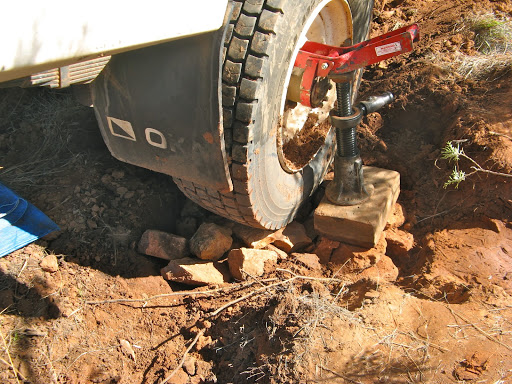
Anyway after 8 hours of digging, lifting and constructing a firm “highway” under the wheels we managed to extricate ourselves. ONLY THEN did a couple of vehicles come along, just after we needed them most.
Nevertheless their assistance in reloading the Oka and helping us past the soft spot was most welcome as we were completely knackered.
A full description of this adventure can be read here.
Tuesday 18 March 2008
Hot Water System using a Heat Exchanger
 |
| Shower installed next to kitchen wire pull-out drawers on right (no doors fitted yet) |
 |
| Corner sink in shower |
The hot water is supplied from a 40 litre hot water tank with a built-in heat exchanger, heated direct from the engine. It provides us with ample continuous hot water, and in the dry, dusty outback, there's nothing like a quick hot shower every morning, or evening, even in the remotest desert locations.
The shower walls are made of Aquatile sheets (no longer available in Oz but try Bunnings for similar products) glued to an aluminium frame. The shower alcove also has a light, extractor fan, small hand basin and sliding shower curtain. The slide-in wire baskets in the photo are part of the kitchen storage system, before the doors were fitted, attached to the side wall of the shower.
While there are gas hot water systems available, there doesn't seem much point in using scarce gas supplies to heat domestic hot water when there is a big engine, creating a lot of heat, just in front.
There are two types of engine water heater using a heat exchanger. The "Glind" instantaneous type which taps into the engine heater supply while the engine is running and is intended for use outside the vehicle, or a built in hot water tank containing a permanent source of hot water. We wanted the latter type.
Choice of Tank
I did a lot of research on the various types and makes of heat exchanger hot water tanks and found an excellent review article from a Norwegian boating magazine. The article is at this site and it's translated from the original Norwegian, but the meanings, test methods and results are quite clear.
The reviewer bought 9 different makes and tested all their attributes (capacities, heating rate, flow rates, thermal insulation etc) before chopping them all in half to check out their internal construction methods and materials used.
While they are all pretty effective, the winner was the Isotemp Basic model made by Indel Marine in Italy (see this link), and is available in a range of sizes from 20 litre, 40 litre, and larger sizes. They are available in Australia through marine suppliers, we bought ours through a local marine store, which saved on shipping costs. Note the 2009 price has almost doubled since we bought ours in 2004. Maybe Indel's take over by Webasto had something to do with that? Much cheaper in the US if the freight cost is reasonable. Note: in 2013 the lower cost locally available source is surprisingly from New Zealand, see here as an example.
This picture show the lonely tank in its planned location. It's held down by 2 fairly thin stainless steel straps which are reasonably effective. However after about 20,000 kms, one of the straps broke where it meets the bolt clamp, due to fatigue, so I installed thicker steel clamp straps and also put an extra strap across the middle of the tank, from the side wall of the Oka to the floor, so it can never break lose. (Note: a full 40 L tank will weigh around 60 kg so it needs to be well secured. I fitted extra steel brackets to chassis rails under the floor so that the fixing bolts can't pull through the flooring, which is 20 mm marine ply).
Operation
In operation, it heats up 40 litres of water to 60-70º in about 1/2 an hour. If that seems very fast, remember that the Oka engine holds 22 litres of coolant, and that heats up to running temperature in 5-10 minutes. However, a word of warning, the Oka engine water temperature can exceed 80º in normal operation and so, therefore, can the water in the hot water tank. This is a dangerously high temperature with the potential for severe scalding. After burning our fingers a few times, we retrofitted an adjustable thermostatic valve (also from Indel Marine) on the outlet from the tank, which mixes cold water in with the hot to regulate the output temperature. We have ours set to about 50º, more than hot enough for a shower, and just hot enough for dish washing.
This picture show the tank being incorporated into the kitchen unit.
It will keep the water useably hot for at least 2 days, depending on usage rates, which means running the engine every 2 or 3 days to reheat the water. The tank also has a built-in 240v, 750w electric immersion heater which is useful if you are camped in a caravan park for several days (but why would you be)?
Note, it would be possible, if you have at least 200w of solar panels and an inverter, to reheat the water using the immersion heater via a 240v inverter and lamp dimmer. The dimmer, set to around 25%, is required to reduce the load to a level that the panels/inverter could supply without flattening the batteries. That would save running the engine. [BTW we also run our 3 way fridge from a 240v inverter since it is more efficient than using 12v (cable power losses are much less at 240v than at 12v)].
Installation
The tank is connected to the engine by normal 20 mm hot water car heater hose which I ran under the floor to the engine compartment and tapped into the heater supply pipes near the engine water pump.
Since the water flow to the dashboard heater unit is restricted by its radiator resistance, most of the hot water flows through the hot water tank heater, which is a loop of 20 mm copper pipe inside the tank. This has a lower resistance to water flow than the dashboard heater so it heats up quickly. I fitted a tap on the water heater engine inlet pipe so it can be disabled if necessary.
High temperature hose must also be used on the hot water outlet from the water tank or it will quickly perish.
Additional Benefits
Apart from providing hot water, the tank also acts as a 40 litre emergency water supply in the unlikely event that all our other water tanks run dry.
A by-product of the hot water tank is that, on starting a cold engine, hot water is now circulated back from the hot water tank through the engine block. This heats it up more quickly than just engine heat alone. With the tap in the supply pipe, this can be prevented if required.
Since I now had a source of hot engine water in the rear of the Oka, I extended the pipes further rearwards to a heater unit salvaged from a Ford van, and located under the rear seat. I fitted a Davies-Craig circulation pump in the supply pipe, to extract heat from a hot engine to warm up the rear in very cold locations, like Bathurst in June, or the west coast of Tassie at anytime. Not as effective as a proper diesel heater would be, but a lot cheaper to install and run. If really desperate, by configuring the taps, we could also circulate hot water from the tank to the heater, at the risk of a cold shower in the morning, not something we are keen on. We can, however, fill a hot water bottle to put our feet on.
The shower alcove space is not wasted either. During the day, laundry bags, a padded milk crate seat, window screens and other soft paraphernalia, even wine casks and slabs of beer, are stored in the shower base, and above I have fitted a removable drying rack for towels, bathers, damp washing etc., and the sliding shower screen (was a PVC Polydoor from Bunnings but any heavy folding plastic door/curtain would work) keeps it all out of view.
A PortaPotti toilet is stored under a seat just in front of the shower and can be located in the shower alcove for use as required.



